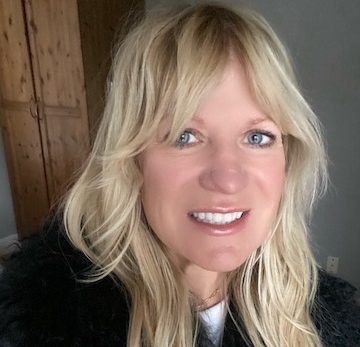There was a snake in the sunroom. “I was just wandering through on my way to clip some mint in the backyard, and there it was,” said my cousin Melissa. She lives in Olympus Cove, home to many more wild creatures than Greek deities.
In a frozen panic, she called her husband, Adam. He was stuck at work. She called all of her neighbors. No one was home. She was on her own. Melissa vs. the snake. And so she did what any reasonable snake-o-phobe would do when faced with a cold-blooded reptile run amok in their sunroom. She grabbed her smartphone.
In the ensuing Instagram reel, Melissa’s camera shakily pans the room. And then we see it. It looks as long as a yardstick. A puke-green, slithering yardstick. Melissa shrieks. Drops multiple F-bombs. Comes close to peeing her pants.
Undeterred, the silent assassin does what silent assassins do. It sneaks along the edges of the room. It settles into the groove of a sliding-glass door, where it comes to a halt, either stuck or lounging. It’s hard to tell which.
Now it’s a stand-off between human and serpent. My money’s on the serpent. And then, just as suddenly as it appears, the snake deftly maneuvers out the door and disappears under the deck of the house’s retaining wall. “I haven’t gone outside since yesterday,” Melissa said. “And now, obviously, we have to move.”
In hindsight, Melissa said it was likely a non-venomous garter snake or rubber boa. “If it had been a rattlesnake,” she said, “I’d have to burn the house down.”
Melissa, who worked in animal rescue for 16 years, is a self-proclaimed nature nerd. “I am inherently fascinated by and curious about wildlife of all kinds—and almost went into rescue mode with that snake,” she said. “But when wildlife crosses into your home, I just can’t.”
So imagine what it’s like for the wild things themselves when we invade their home.
Riding my bike on the Rail Trail the other morning, I saw two women standing raptly on one of the wooden bridges next to the trail. After our epic snows of the past winter, the little streams along the trail are filled to the brim. And the marshes are jammed with tall grasses, cattails and other wetland plants.
Feeling nosy, I stopped to ask what they were looking at so intently. They pointed toward the pond and I saw three large, white birds floating peacefully together. Their silvery-white bodies glinted in the sunlight, while bright, orange bills explored the surface of the water. The women told me they were pelicans. Pelicans in Park City? Who knew?
I got home and googled it. Sure enough, they were pelicans. Likely part of the squadron that returned to the Great Salt Lake’s Gunnison Island — after an 80-year absence. According to Swaner Preserve Director of Conservation Rhea Cone, the birds returned to the Great Salt Lake to nest and raise their young. Considering that less than 1% of the state of Utah is wetlands, it’s a kind of nature’s miracle that they’re here at all.
But what I was wondering was what would bring them all the way up to Park City — especially considering how the rail trail’s wetlands seem to be more encroached upon every season. By drought. Development. Construction. Loud-talking humans.
Nevertheless, Cone said the pelicans come up here for food. And the ones spotted in Park City likely flew over 50 miles to find it. “It’s a long commute,” she said. But a necessary one. The Great Salt Lake is devoid of fish, so they have fly to places like East Canyon Creek in the Swaner Preserve and the streams along the rail trail to fuel up for the trip back to the rookery on Gunnison Island. Cone said to feed their young, they literally regurgitate the food they’ve consumed. Ew, but you do you, mama pelican.
Cone said the Great Salt Lake is an inhospitable place for pelicans. It’s brutally hot with little shade and no fish. But in this case, the habitat’s inhospitality may actually be a good thing, deterring predators like coyotes. And annoyances like humans.
The other day, I was back on the rail trail, riding my bike to the gym. I spotted two figures in the distance. Standing about 4 feet tall with round bodies, serpentine necks and long, spindly legs, they looked like aliens.
As I got closer, I guessed they were some sort of crane. Or great blue herons maybe? They stood patiently, majestically, giving me as wide a berth as I gave them. They held their ground as I passed, and seemed to regard me with as much wonder as I regarded them. I thought about how extraordinary a single instant can be when you actually slow down and pay attention to it.
For the moment at least, I felt welcome in their home.

